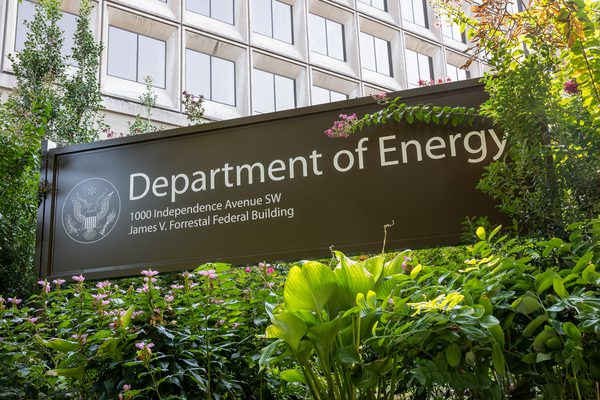The first comprehensive federal strategy outlines ways to reduce emissions in the buildings sector by 90% by 2050, supporting President Biden's plan to invest in America and improve energy costs, resilience, and address the climate crisis.
The Biden-Harris Administration has released a document called Decarbonizing the U.S. Economy by 2050: A National Blueprint for the Buildings Sector. The plan aims to decrease greenhouse-gas emissions from buildings by 65% by 2035 and 90% by 2050, and it was created by the U.S. Department of Energy in partnership with the Department of Housing and Urban Development, the Environmental Protection Agency, and other federal agencies. This is the first government-wide strategy to reduce carbon emissions from buildings and supports President Biden's efforts to achieve clean energy and climate goals., a comprehensive plan to reduce greenhouse-gas (GHG) emissions from buildings by 65% by 2035 and 90% by 2050. The U.S. Department of Energy (DOE) led the Blueprint’s development in collaboration with the Department of Housing and Urban Development (HUD), the Environmental Protection Agency (EPA), and other federal agencies. The Blueprint is the first sector-wide strategy for building decarbonization developed by the federal government, underscoring President Biden’s whole-of-government approach to cutting harmful carbon emissions and achieving the nation’s ambitious clean energy and climate goals.
“The building sector in America produces over a third of the harmful emissions that affect our air and health. The Biden-Harris Administration has planned to reduce these emissions from buildings across the country.” said Jennifer M. Granholm, the U.S. Secretary of Energy, said this. “The Department of Energy is presenting the first comprehensive federal plan to reduce energy in our homes, schools, and workplaces, aiming to lower utility bills and create healthier communities while addressing the climate crisis.”
Buildings are responsible for over a third of domestic climate pollution and $370 billion in annual energy costs. Decreasing greenhouse-gas emissions from buildings is crucial for reaching the Biden-Harris Administration's goal of achieving net-zero emissions by 2050. The plan expects to reduce 90% of total greenhouse-gas emissions from the buildings sector, saving consumers over $100 billion in annual energy costs and avoiding $17 billion in annual health costs.
According to the U.S. Census Bureau's Household Pulse Survey, one in five Americans lives in a household that is at least one month behind on its energy bills. Economically disadvantaged communities are more likely to experience energy insecurity due to high energy costs, as well as suffer from poor building conditions and health-harming pollution. To address these issues, the plan focuses on making energy and technology more affordable, as well as improving community resilience to power outages and extreme weather events caused by climate change. Household Pulse Survey. Economically disadvantaged communities are more likely to face energy insecurity due to high energy costs. They are also more likely to suffer from the effects of substandard building conditions and health-harming pollution. To address these inequities, the Blueprint emphasizes affordability through reduced energy and technology costs, as well as measures that would help make communities more resilient to power outages and climate change-fueled extreme weather events.
To achieve the overall emissions reduction goals for the buildings sector, the plan sets four strategic objectives:
- Increasing building energy efficiency
- Accelerating onsite emissions reductions
- Transforming the interactions between buildings and the electricity grid
- Minimizing the emissions from producing, transporting, installing, and disposing of building materials
Each goal has specific performance targets and milestones to achieve by 2035 and 2050. Meeting these targets will need faster use of a wide range of decarbonization and energy efficiency technologies. The Blueprint describes coordinated federal actions that can speed up the deployment of these solutions. These actions include funding research and development to create cheaper technologies, expanding markets for low-carbon technologies, providing direct funding and financing, and supporting the development of emissions-reducing building codes and appliance standards. In line with the Biden-Harris Administration’s efforts to ensure the benefits of the clean energy transition reach affected communities, the Blueprint also outlines ways that federal agencies can support state, local, and Tribal decarbonization goals.
To achieve these goals, DOE is focused on developing innovations in three key areas: building upgrades, efficient electrification, and smart controls. DOE’s approach aims to advance scalable technologies and installation solutions for affordable-housing residents while expanding workforce capabilities at the state and local levels.
DOE’s Affordable Home Energy Shot™, which aims to reduce the upfront cost of upgrading a home by at least 50% and reduce energy bills by 20% within a decade, will speed up progress toward the emissions-reduction targets set in the Blueprint. To learn more about DOE’s efforts to improve the efficiency and affordability of America’s building stock, visit the Building Technologies Office homepage.



